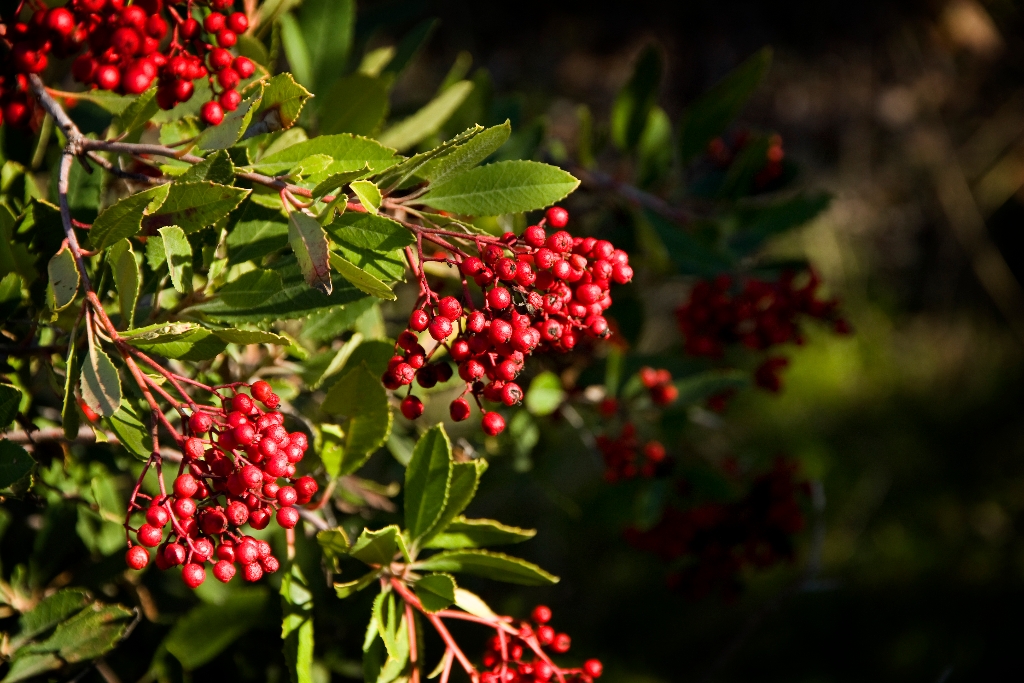
Island Chumash Plant Usage Guide Stop 1
The Native Plant Garden includes some of the important plants used by these people. Each trail station includes a brief discussion of these plants and the uses made of them by the Chumash. The Island Chumash names, as well as the common plant names, are printed next to each illustration.
Stations along the trail are marked by numbered tiles and decorated with a black Chumash symbol.
A separate trail guide describing plant adaptations is available at the trailhead and in the visitor center. Download a PDF of either guide at Guide to Island Plant Adaptations or Guide to Island Chumash Plant Usage
As you walk the trail remember many native plants are easily damaged. Please do not pick the flowers or touch the plants.
Introduction
A cool island breeze ruffles the young Indian mother's hair as she pauses in her work. She loosens the bands of red milkweed fiber holding her braid and tucks in the wispy strands of loose hair. Carefully she wraps the braid in a bun and inserts the large, wooden hairpin decorated with glittering shell. A few feet away her baby sleeps on his cradleboard of willow sticks and tules.
It is summer, and she is gathering bulbs for her family. In her right hand she holds a digging stick of smooth, strong toyon wood. The digging stick is of the best quality; the wooden point is sharp and hard, and a green, doughnut-shaped stone weight encircles the shaft. A duller, lighter stick would be useless in hard soil. Near her foot sits a basket of woven rush. The basket is full of wild hyacinth bulbs, the result of her morning's work.
The young mother brushes the dirt from her hands as she begins to plan her meal. First she will clear out the roasting pit and fill it with hot rocks covered by a layer of grass. On top of the grass she will place the bulbs, then more grass and earth. They will bake for a whole day, and tomorrow they will eat them with the fish her husband catches.
But some of the bulbs she will set aside for her husband's next trading expedition to the mainland. Although the mainland Indians have more acorns and a greater variety of plant foods, the island bulbs grow larger, and for this reason they are a popular trade item. The girl smiles as she imagines the gifts her husband will bring home from his next trading trip.
For thousands of years, the Chumash occupied the northern Channel Islands, as well as a large portion of the mainland from San Luis Obispo south to Malibu. They lived in towns or settlements (which the Spaniards called rancherÃas), each of which was under the leadership of a wot, or chief. The settlements located along the Santa Barbara Channel were especially populous.
The Chumash were hunter-gatherers who obtained their food by hunting land and sea mammals, fishing, and gathering shellfish and plant foods. Although they did not practice agriculture (prior to the Spanish missions), the Chumash used native plants as a primary source of food and medicine. Native plants also provided important construction materials for canoes, houses, bows, arrows, nets, baskets, beds, clothing, footwear, ornaments, and a variety of other items used in daily life.
Plants Used in Manufacturing
During the winter season the toyon's red berries provided an important food supply for birds as well as for many California Indian groups. Toyon (qwe') was also a valuable source of hardwood for manufacturing a variety of implements such as arrows, harpoons, fish spears, digging sticks, and gaming pieces.
The Chumash often used heat or steam to shape and form objects made from toyon and other hardwoods. For example, bundles of toyon arrows were steamed in earth ovens to make the rods pliable; the shafts were then straightened and allowed to dry. After drying, the arrows were trimmed to the proper size, the points shaped and hardened in hot ashes, and feathers added.
Other plants important to Chumash manufacturing included elderberry, used for whistles, clapper sticks, and bows; willow, used for house frameworks, basketry, and cordage; tule, used for matting and for thatching houses; and milkweed, used for string.
Is there something we missed for this itinerary?
Itineraries across USA


















































